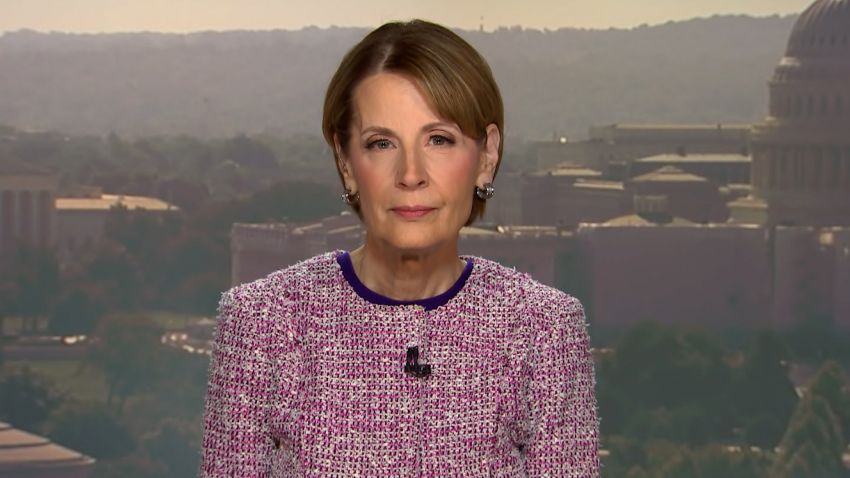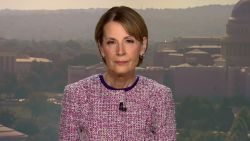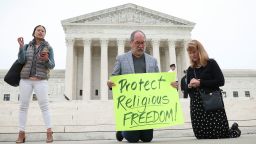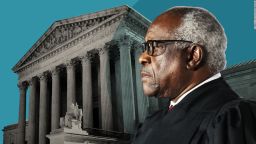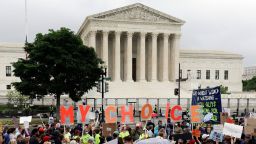The Supreme Court reached into every corner of American life, reordering intimate family choices, breaching the separation of church and state, and diminishing the steps government can take to prevent gun violence or protect the environment.
The upheaval of the past several weeks, especially as the court outright ended a half-century of women’s privacy rights, is unmatched in modern times. The speed and sweep by which the right-wing majority acted reflects, as one liberal dissenter wrote, a “restless and newly constituted Court.”
And it is not finished.
The conservative supermajority – anchored by three relatively young appointees of former President Donald Trump – is positioned to continue its impact with disputes next session over the Voting Rights Act, affirmative action and religious objections to LGBTQ protections.
Yet it will be the epic 2021-22 session that stands out over time. The case of Dobbs v. Jackson Women’s Health Organization, reversing Roe v. Wade, will likely be remembered as one of the most far-reaching rulings in Supreme Court history. The 5-4 decision marked the first-ever complete reversal of a constitutional right.
The justices also enlarged the Second Amendment, favoring gun owners, and redefined the balance between the First Amendment’s prohibition against government “establishment of religion” and its “free exercise.” That will allow more prayer in public settings and require more government money for religious education.
The new landscape was made possible because of the three Trump appointees – Neil Gorsuch, age 54, Brett Kavanaugh, 57, and Amy Coney Barrett, 50. They separated themselves from prior Republican-named justices who had adhered to precedent and “the promise of constancy,” as Justices Sandra Day O’Connor, Anthony Kennedy and David Souter called it in the 1992 case of Planned Parenthood v. Casey, which reaffirmed Roe.
The drive to the right was not wholly unexpected, even though its force has shaken the country.
When liberal Justice Ruth Bader Ginsburg died in September 2020 and Trump quickly replaced her with Barrett, the new six-justice right-wing bloc appeared positioned to roll back decades of individual rights and government power.
It was just a question of how quickly it would happen and whether the conservative but incrementalist Chief Justice John Roberts would be able to slow the juggernaut.
Twenty months later, it is plain the majority was in a rush. The right wing did not need Roberts’ vote for a majority, and on many conservative agenda items, such as religion, race and regulatory power, he was fully with them. (Roberts wrote alone in Dobbs – with a middle ground that dissatisfied both sides).
Aggressive conservatives
In the most momentous cases, including abortion rights, the justices aggressively decided more than the case demanded. When the justices agreed to take up a Mississippi law that banned abortions at 15 weeks of pregnancy, it said it would decide only whether that ban was unconstitutional based on Roe and Casey protections for a woman’s abortion choice before fetal viability, at about 23 weeks.
Kavanaugh, who succeeded Kennedy in 2018, signed on to the Dobbs opinion denigrating Casey’s reasoning and likening Roe to the 1896 Plessy v. Ferguson, which upheld racial segregation, even as he professed “deep and unyielding respect” for O’Connor, Kennedy and Souter.
The Dobbs opinion suggested a new era of abortion debate beyond the domain of the justices.
“After today’s decision, the nine Members of this Court will no longer decide the basic legality of pre-viability abortion for all 330 million Americans,” Justice Brett Kavanaugh wrote in a concurring statement as he joined the majority opinion by Justice Samuel Alito, which was also signed by the other Trump appointees and Justice Clarence Thomas. “That issue will be resolved by the people and their representatives in the democratic process in the States or Congress.”
It is likely, however, with states responding to the Dobbs decision with new anti-abortion laws, that related controversies will soon return to the high court.
The justices reached out in the Environmental Protection Agency case, too, as the Obama-era Clean Power Plan had been repealed and no Biden administration plan was yet in place. Thursday’s decision will limit the Biden effort to control emissions in coal and other industries to counteract climate change.
More broadly, the ruling will affect Washington’s ability to protect the country’s public health and safety.
Writing for the majority, Roberts allowed that limiting carbon dioxide emissions and forcing a transition from the use of coal to generate electricity may be a “sensible” way to address the climate change crisis. “But it is not plausible that Congress gave EPA the authority to adopt on its own such a regulatory scheme in” prior statute, he said.
Contending that the court itself was asserting inordinate control on climate policy, dissenting Justice Elena Kagan said, “I cannot think of many things more frightening.”
Earlier this year, the six-justice conservative wing rejected the Biden administration’s effort to stop the spread of Covid-19 with a vaccination rule. The Occupational Safety and Health Administration had directed employers with 100 or more workers to require vaccines or weekly Covid-19 testing.
The court ruled in January that OSHA had exceeded its statutory role in workplace safety. “Although COVID-19 is a risk that occurs in many workplaces, it is not an occupational hazard in most,” the justices said in their unsigned opinion.
The same six justices favored conservative Christians in Maine and ruled that if a state subsidizes private education, it must include religious institutions. They also sided with a Washington state high school football coach who prayed at midfield after games, and in doing so jettisoned a legal approach that warned against government “endorsement” of religion.
As the majority emphasized respect for religious expression in the case of Kennedy v. Bremerton School, dissenters said the decision disserved schools and students, along with the country’s “longstanding commitment to the separation of church and state.”
Liberal wing can do little but dissent
New Justice Ketanji Brown Jackson, the nation’s first African American woman on the bench in the court’s 233-year history, succeeded retiring Stephen Breyer on Thursday and will be in place for the new session.
At age 51, compared with the 83-year-old Breyer, Jackson will bring a new shot of youth along with her historic status. The 6-3 conservative-liberal balance, however, will not change.
The wing that Jackson joins is likely to remain on the losing side, particularly in the highly charged voting-rights and culture-war controversies on the agenda for the 2022-23 session, which begins in October.
When the three liberals, including Breyer, dissented in the Dobbs abortion case, they recalled a lament of Breyer’s from 2007 as he dissented from a decision striking down school reintegration plans: “It is not often in the law that so few have so quickly changed so much.”
“So few” are now – as a supermajority – more aptly “so many.”
The swift pace of such great change has been staggering. Dissenters tried, in vain, to hold on to precedent that went back half a century in the abortion rights and religious liberties controversies.
In the EPA case, they clung to a recent precedent, a 2007 case in which the high court recognized the EPA’s authority to regulate carbon dioxide and to address environmental crises.
“But that Court,” wrote Kagan, “was not this Court.”
Correction: An earlier version of this story misattributed a quote in the Dobbs concurring opinion. It was written by Justice Brett Kavanaugh.

